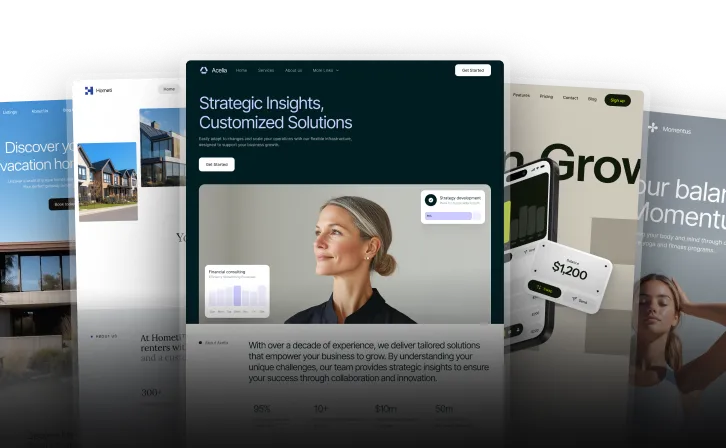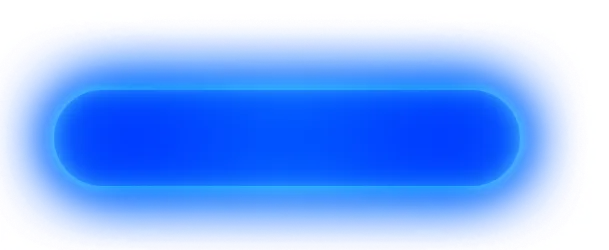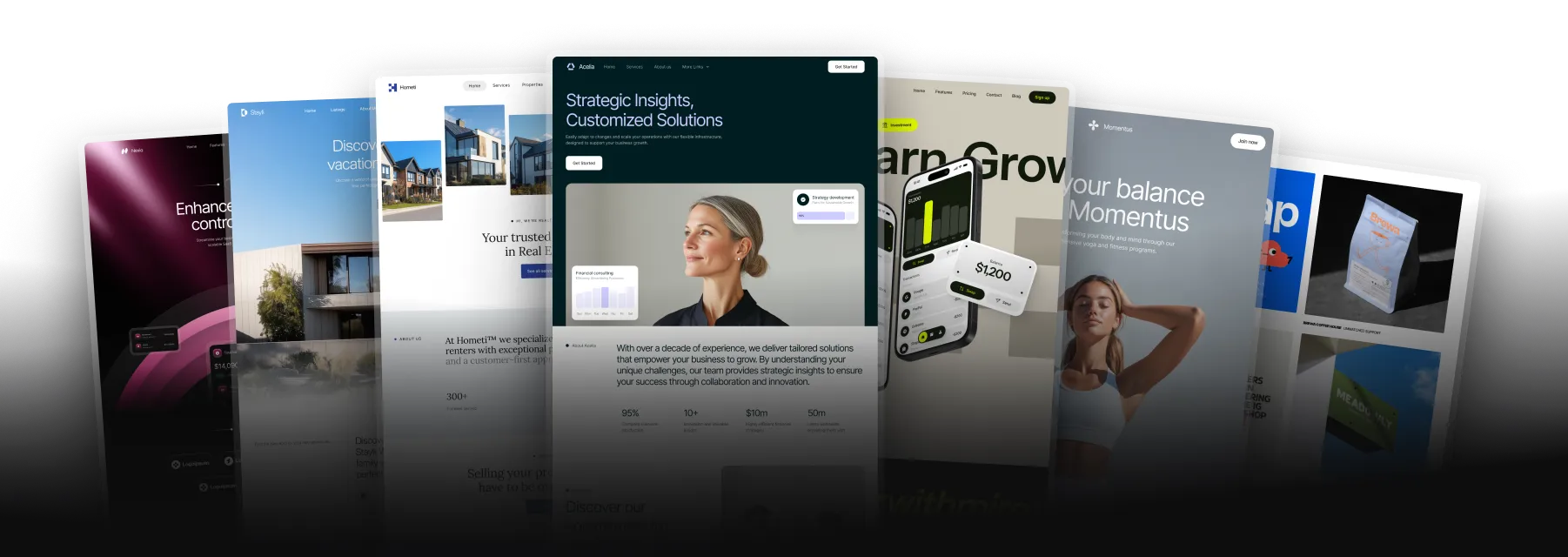Framer vs Bubble: Which Website Builder is Right for You
Unlock all templates




Choosing between Framer and Bubble depends on your project needs:
- Framer: Best for visually stunning designs, ideal for portfolios, landing pages, and blogs. Simple to use, with features like on-canvas editing, responsive design tools, and animations.
- Bubble: Best for building complex web apps and SaaS products. Offers advanced functionality, database management, and extensive customization, but has a steeper learning curve.
Quick Comparison
| Aspect | Framer | Bubble |
|---|---|---|
| Focus | Visual design and prototyping | Web application development |
| Best For | Portfolios, landing pages, blogs | SaaS products, complex web apps |
| Ease of Use | Beginner-friendly, Figma-like UI | Steeper learning curve, dense UI |
| Customization | Flexible design tools | Advanced workflows and integrations |
| Pricing | Starts at $0/month | Starts at $0/month |
| Scalability | Limited for complex apps | Handles large-scale applications |
If you need a design-first platform for quick, polished websites, Framer is the way to go. For feature-rich, scalable web applications, choose Bubble.
Design Tools and Features
Framer's Design Tools

Framer takes inspiration from Figma, making it easy to get started. It offers a range of tools to create visually appealing websites, including:
- Side-by-side breakpoints for responsive design
- Real-time collaboration features
- Advanced masking and vector editing
- 3D transforms and a custom form builder
- AI-powered text rewrite capabilities
Framer allows direct text editing right on the canvas, eliminating the need for separate editing windows. Its drag-and-drop functionality ensures elements snap to the grid for precise alignment.
Bubble's Design System

Bubble comes with a vast array of features, though its interface can feel intimidating at first. It includes detailed styling options such as:
- Customizable opacity and dimensions
- Rotation angles and shadow effects
- Advanced font controls, including spacing adjustments
- Detailed border and padding settings
"Bubble has the most robust feature set and functionality, but the UI and UX is so poor that I was so daunted, didn't feel confident exploring the tool on my own, couldn't get anything working the way I wanted, and still have yet to publish anything", says Eve Weinberg, Lead Product Designer.
Design Features Side by Side
Here's a quick comparison of key design features between Framer and Bubble:
| Feature Category | Framer | Bubble |
|---|---|---|
| Interface Design | Modern, Figma-like experience | Function-focused, traditional layout |
| Text Editing | Direct on-canvas editing | Separate editing window |
| Responsive Design | Visual breakpoint system | Manual responsive settings |
| Animation Capabilities | Built-in effects and transitions | Limited animation options |
| Component System | Components and variants | Reusable elements |
| Integration Options | Requires JavaScript for API connections | Built-in API Connector |
| Plugin Ecosystem | Template marketplace | Extensive plugin marketplace |
"I found that Framer was one of the easiest to use. I was up and running with it in no time, feeling completely confident in exploring all of its affordances, and I had a fully working website in about 1 day", shares Eve Weinberg.
Framer focuses on visual design and user-friendly interactions, making it ideal for creating polished interfaces. On the other hand, Bubble excels in offering advanced customization and integration options, making it well-suited for building complex web applications.
Getting Started and Training
Working with Framer
Framer offers a sleek and user-friendly interface, much like Figma. Its progressive disclosure system ensures that features are introduced gradually, making it less intimidating for beginners.
The visual interface includes:
- On-canvas text editing
- Grid-based snapping
- Clear typography and layout options
To explore Framer's full capabilities, learning JavaScript and CoffeeScript is suggested, though not mandatory for basic site creation. On the other hand, Bubble requires a more structured learning path.
Building in Bubble
Bubble prioritizes functionality and offers a more complex learning experience compared to Framer. Its interface can feel dense at first, which might be overwhelming for new users. However, Bubble Academy provides various resources to ease the learning process:
| Resource Type | Description | Best For |
|---|---|---|
| Crash Courses | Covers the basics quickly | Complete beginners |
| Video Tutorials | Step-by-step guidance | Visual learners |
| Interactive Lessons | Hands-on practice | Active learners |
| Documentation | In-depth references | Technical users |
| Coaching Marketplace | One-on-one guidance | Custom projects |
Help and Support Options
Both platforms offer strong support but take different approaches.
Framer's learning resources include:
- "Framer Fundamentals": Ideal for designers moving from Figma or Sketch
- "Framer Forms": Focused on form building
- "Framer CMS Basics": Covers content management
- "Build a Documentation Site in Framer": A practical workshop
Bubble provides extensive training options as well. Buildcamp, a leading Bubble training provider, has supported over 20,000 founders and developers in mastering the platform. Romain Laffitau, Founder of @TheNoCodeCrew, shared his experience:
"Buildcamp has totally changed my life"
Airdev, another key player in Bubble training, launched its free Airdev Bootcamp in 2015. This program combines self-paced video lessons with hands-on exercises, culminating in a capstone project where participants create functional applications using the Canvas framework.
"The Academy is your guide to building on Bubble. We cover everything you need to get started - from navigating the interface to expert features." - Bubble Academy
Growth and Technical Limits
Framer's Technical Capabilities
Framer operates on Amazon Web Services (AWS), leveraging CloudFront, S3, and globally load-balanced frontends with in-memory caches. This setup ensures strong performance and reliability. Key features include:
- Server-side rendering for quicker load times and better SEO.
- Sub-second deployment times for instant global updates.
- Automatic image optimization and format conversion.
- HTTP/2 support for faster resource delivery.
Still, Framer has some notable constraints. Its infrastructure supports around 17,000 sites. On the Pro plan, bandwidth is capped at 100 GB per month, with a limit of 200,000 monthly visitors and support for only 10 CMS collections.
Bubble's Advanced Features
Bubble offers powerful database functionality, but achieving peak performance often requires detailed optimization. To maintain stability, Bubble imposes several limits:
| Feature | Limitation |
|---|---|
| Sorting Results | 50,000 items maximum |
| Database Field Size | 10 million characters |
| Single Record Size | 20 MB maximum |
| Related Records | 10,000 per item |
| Page Elements | 10,000 combined total |
| Workflow Duration | 5-minute timeout |
API request limits depend on the plan:
- Starter: 15,000 requests per minute
- Growth: 25,000 requests per minute
- Team: 35,000 requests per minute
Performance Comparison Table
| Performance Aspect | Framer | Bubble |
|---|---|---|
| CDN Provider | AWS CloudFront | Cloudflare |
| Image Optimization | Automatic | Manual |
| Video Handling | YouTube/Vimeo integration | Native hosting |
| Database Scaling | Limited CMS | Strong but with limits |
| Global Deployment | Instant | Variable |
| Security Features | Built-in DDoS protection | Basic security |
For example, during the PGA Qualifier in Wichita, Kansas, developers needed to support 3,500 concurrent users in real time. The app used websockets with an HTTP fallback to maintain consistent performance across devices - a level of control not achievable with Bubble.
Optimization Tips
To get the best performance from these platforms, follow these tips:
For Framer [9]:
- Use blur values under 10.
- Apply appear effects for above-the-fold content.
- Limit scroll animations.
For Bubble [10]:
- Reduce data fetching.
- Simplify page structures.
- Schedule complex calculations.
- Filter data at the source.
These technical details and optimization strategies directly influence project costs, which will be explored in the next section.
sbb-itb-fdf3c56
Cost Analysis
Framer Plans and Costs
Framer provides Personal and Business plans, which vary based on page limits, CMS collections, and bandwidth.
Personal Plans:
- Free: $0/month – Includes 1,000 pages, 10 CMS collections, and 5MB uploads.
- Mini: $5/site/month – Offers 2 pages, custom domains, custom code, and 1,000 monthly visitors.
- Basic: $15/site/month – Covers 1,000 pages, 2 CMS collections, 10,000 monthly visitors, and 500 form submissions.
- Pro: $30/site/month – Extends to 10,000 pages, 10 CMS collections, 200,000 monthly visitors, and a staging environment.
Business Plans are tailored for teams with growing needs:
| Plan | Monthly Cost | Key Features | Bandwidth |
|---|---|---|---|
| Startup | $75 | 15,000 pages, 20 CMS collections | 200GB |
| Scaleup | $200 | 30,000 pages, 30 CMS collections | 500GB |
| Enterprise | Custom | Custom limits, Slack support | Custom |
Bubble Price Tiers
Bubble's pricing is based on workload units, which measure server resource usage:
| Plan | Monthly Cost (Annual Billing) | Workload Units | Key Features |
|---|---|---|---|
| Free | $0 | 50,000 | Development version, API connector, component library, 1 app editor |
| Starter | $29 | 175,000 | Live app, custom domain, recurring workflows, basic version control |
| Growth | $119 | 250,000 | 2 app editors, premium version control, two-factor authentication |
| Team | $349 | 500,000 | 5 app editors, sub apps, automated security tests |
Project Cost Example for SaaS Applications
Let’s break down the potential cost of running a SaaS project on Framer's Startup plan:
- Base Startup Plan: $75/month
- Additional Editors: 3 × $40 = $120/month
- Additional Locales: 2 × $40 = $80/month
Total Monthly Cost: Approximately $275
Additional Costs to Keep in Mind:
- VAT or sales tax may apply to Framer invoices.
- Bubble's workload units need regular monitoring to avoid overages.
- Both platforms offer discounts for annual billing and customizable enterprise options.
These pricing structures highlight how each platform can scale to meet the demands of your project, whether it's design-focused or application-based.
Best Platform by Project Type
Building on earlier feature and pricing comparisons, here's how to decide which platform best suits your project's needs.
When to Choose Framer
Framer works best for projects that emphasize design and user experience. Its simple interface and on-canvas editing make it ideal for visually appealing sites like:
- Portfolio Websites: Great for designers, photographers, and other creatives to present their work in a polished and eye-catching way.
- Marketing Landing Pages: Perfect for campaigns needing bold designs and smooth animations.
- Health and Wellness Sites: Framer's clean templates focus on comfort and visual engagement.
Brands like Lóvi and Biograph highlight how Framer delivers visually engaging and refined user experiences.
When to Choose Bubble
Bubble is the go-to choice for projects requiring advanced workflows and data management. Its strong backend capabilities make it ideal for:
| Project Type | Key Features |
|---|---|
| SaaS Applications | Workflow automation, custom user roles |
| E-commerce Platforms | Inventory management, scaling capabilities |
| Marketplace Solutions | Multi-user systems, real-time data handling |
Bubble stands out for handling traffic surges with automated scaling, adding resources as needed. Plus, its API Connector and plugin marketplace allow for seamless integration of complex features.
Platform Choice by Industry
Each platform aligns with specific industry needs, making the choice clearer based on your goals:
Framer Best Fits:
- Creative Services: Design agencies benefit from Framer's advanced visual tools and responsive designs.
- Personal Brands: Build professional-looking sites quickly and easily.
- Wellness Industry: Companies like Wotter use Framer to combine vibrant designs with user engagement.
Bubble Best Fits:
- Technology Startups: Use Bubble's platform-as-a-service (PaaS) features for fast prototyping and scaling.
- Enterprise Solutions: Dedicated server options cater to enterprise needs.
- Digital Marketplaces: Bubble's backend handles complex user interactions seamlessly.
For e-commerce, Framer is ideal when using Shopify for storefront design, while Bubble is better for businesses needing extensive customization and automated workflows.
These industry-specific strengths, combined with the technical and pricing insights discussed earlier, can help you make an informed decision.
Conclusion
Main Differences
Framer and Bubble excel in different areas: one shines in visual design, while the other focuses on complex functionality. Here's a quick comparison:
| Aspect | Framer | Bubble |
|---|---|---|
| Core Focus | Design and visual appeal | Logic and functionality |
| Learning Curve | Easier, design-focused | More technical, steeper curve |
| Best For | Portfolios, landing pages | Web apps, SaaS products |
| Customization | Flexible visual design | Extensive feature options |
| Scalability | Ideal for simpler projects | Handles complex, scalable apps |
These differences highlight the strengths of each platform, helping you match their features to your project needs.
Making Your Choice
Your decision should align with your project's specific goals. If you need a site that's visually stunning and quick to launch, Framer is the way to go. On the other hand, if your focus is on robust workflows, scalability, and advanced integrations, Bubble is better suited for the job.
Both platforms handle mobile responsiveness differently: Framer offers intuitive tools for design-focused users, while Bubble provides more comprehensive options for optimizing web apps.
Consider your technical skills, too. Framer's user-friendly interface is great for beginners focused on design, while Bubble rewards those ready to dive into its deeper, more technical capabilities. In the end, choose the platform that best fits both your creative vision and technical needs.
Related Blog Posts
Recommended posts
Unlock all templates







